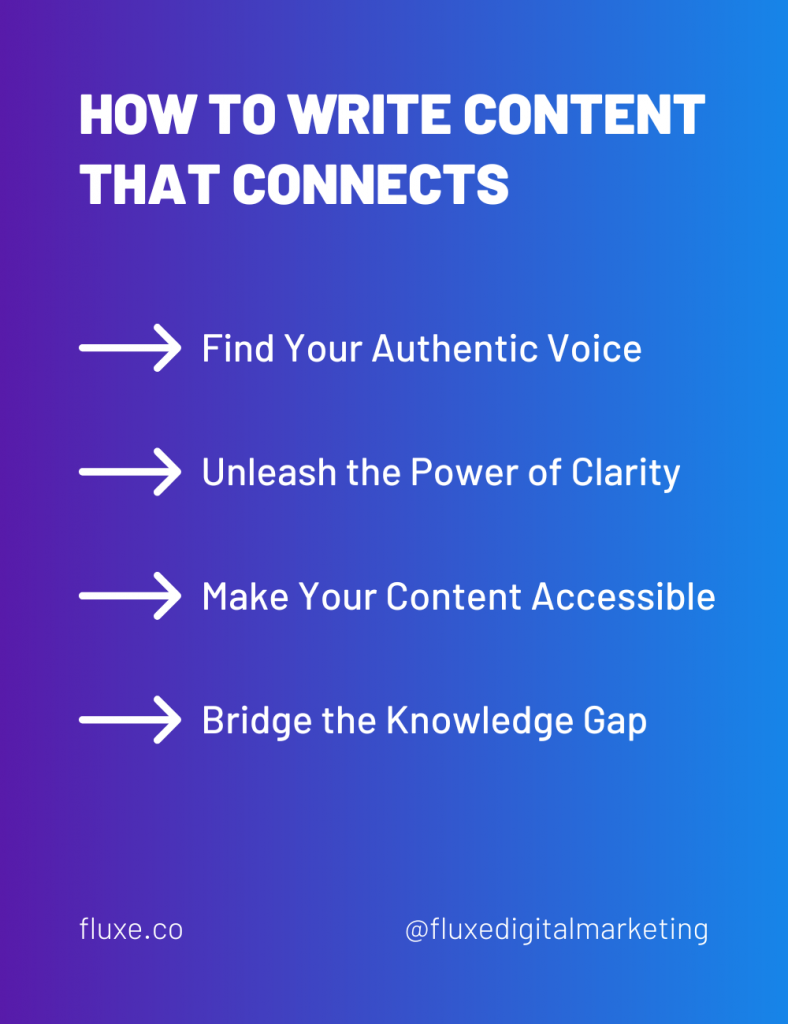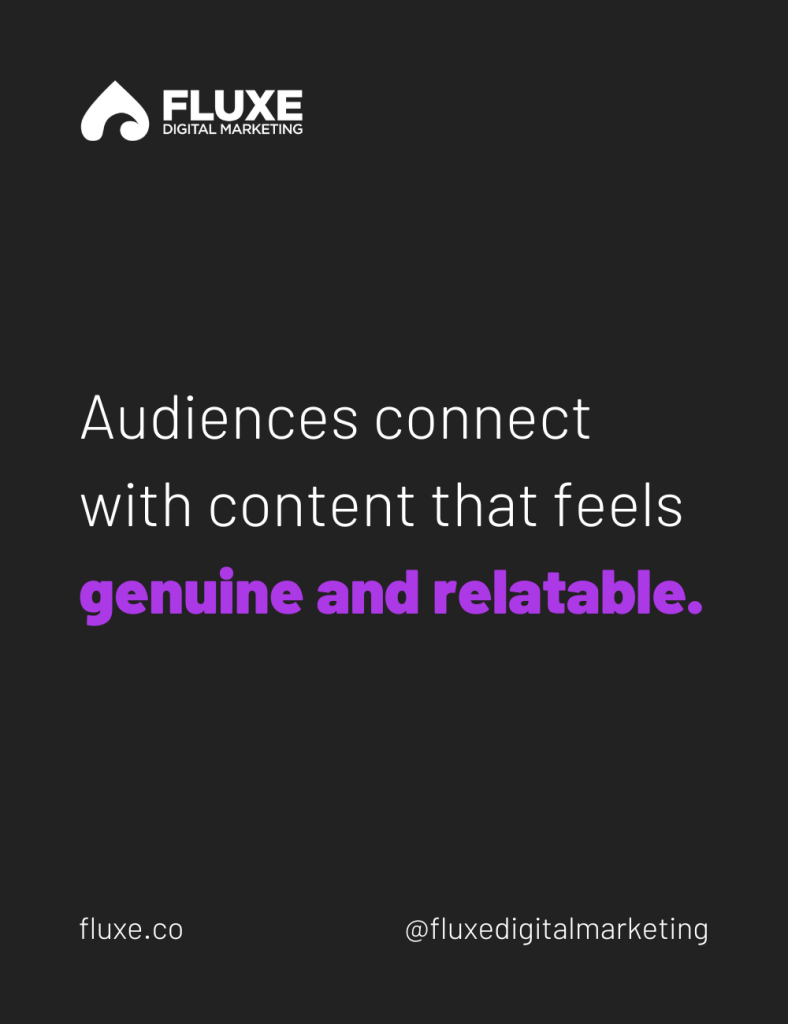So, you’re an expert who wants to use content to build trust along the buyer journey. Complicated, sophisticated language is the best way to convey your intelligence and authority to your audience, right?
It’s not.
In this post, we’ll explain why simple, clear language is the most effective way to showcase your expertise, build trust with your audience, and convert readers into loyal customers.

The Case for Voice Authenticity
Experts sometimes fear that if they don’t use elevated language, their audience won’t see them as credible or intelligent. This couldn’t be further from the truth. Complexity doesn’t equal credibility.
Audiences connect with content that feels genuine and relatable. We call this “voice authenticity” — letting your personality and unique perspective shine through your writing. It’s the opposite of trying to sound like someone you’re not.
For instance, imagine you’re a financial planner writing a blog post about retirement savings. You could fill it with jargon like “asset allocation” and “risk tolerance.” Or, you could write like you’re having a friendly chat with a client: “Let’s talk about how to make sure your money is working hard for you, so you can enjoy your golden years stress-free.”
To infuse authenticity into your writing, write like you speak (with a little polish, of course). Use contractions, personal anecdotes, and even a bit of humor if that’s your style. Your readers will feel like they’re having a conversation with a real person, not being lectured by a faceless expert.

Unleash the Power of Clarity
Clarity in communication is about making your message easy to understand. It isn’t about dumbing things down, but about being concise and direct.
Let’s say you’re a doctor writing a blog post about a new treatment for a chronic condition. You could describe it like this:
“The novel therapeutics leverage a multi-modal approach, targeting both the underlying pathophysiology and the symptomatology of the condition.”
Or, you could say:
“This new treatment works in two ways: It addresses the root cause of the condition while also relieving symptoms.”
A reader trying to understand their treatment options would definitely prefer the latter.
Clear, comprehensible content doesn’t just build trust with your audience — it also boosts your search engine rankings. Search engines prioritize content that provides a positive user experience, and easy-to-read text is a big component of that.
To write with clarity, use short sentences and paragraphs (one to three sentences is ideal). Choose simple words over jargon when possible. And don’t be afraid to explain concepts that might be obvious to you, but new to your readers.
Make Your Content Accessible
Accessible content is content that meets your audience where they are. It considers their existing knowledge level and uses terms they understand.
The key is to balance your expertise with your audience’s needs. They likely need more context and explanation than you’d provide for an audience of your peers.
Let’s say you’re a software engineer writing a blog post about a new programming language. Your audience includes both experienced developers and coding newbies.
To make your content accessible to both groups, you might start with a high-level overview everyone can understand: “This new language is designed to make app development faster and more efficient.” Then, you dive into the technical details for the more advanced readers while providing links to resources for those who need more background.
Another effective way to make your content more accessible is to use examples and storytelling. Illustrate abstract concepts with real-world scenarios your audience can relate to.
Visuals like infographics and videos also make complex information more digestible. To learn why visual content is non-negotiable, click here.
Bridge the Knowledge Gap
The knowledge gap between experts and their audience can feel vast. But with the right techniques, you can build a bridge.
Start by identifying what your audience already knows and what they need to learn. Then, break down complex ideas into smaller, more manageable pieces. Use analogies and metaphors to relate new concepts to familiar ones.
Let’s revisit the financial planner example. To explain diversification to a lay audience, a financial planner might say something like:
“Think of your investment portfolio like a pizza business. You can stock up on just pepperoni, but what if everyone suddenly decides they don’t like pepperoni anymore? Your pizza business is in trouble.
But if you offer a variety of toppings — some meat, some veggies, some cheese — you’re likely to please more customers and keep your business thriving. That’s what diversification does for your investments.”
Key Takeaways for Top-Tier Experts
Effective content marketing isn’t about sounding like the smartest person in the room. It’s about empowering your audience with knowledge and building a relationship based on trust.
By applying these strategies to your blog posts, you’ll transform your expertise into content that converts readers into loyal customers. They’ll walk away not just impressed by your knowledge, but feeling like they’ve learned something valuable.
So, go ahead — embrace simplicity in your writing. Your expertise will shine brighter for it.



